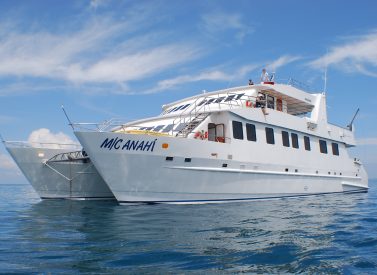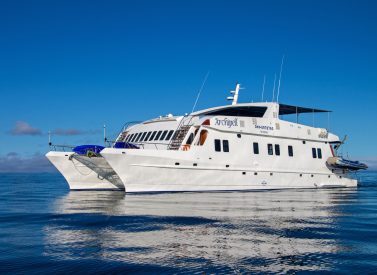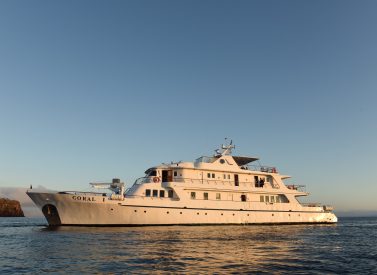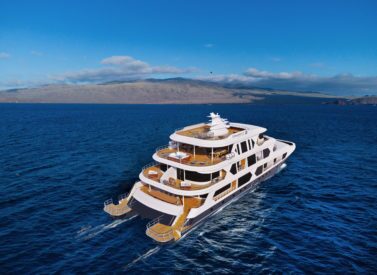
Galapagos Angel Boat
The Angel Galapagos first class boat: cruise in comfort on a Galapagos Islands holiday.
The Angel features the best European design for the most spectacular Galapagos holidays. Ocean stabilisers help steady the boat at sea to ensure a smooth passage.
Suites and convertible twin and double cabins make lovely accommodations on this newest motor cruiser. Panoramic windows mean you’ll never miss out on the Galapagos archipelago’s wildlife spotting opportunities.
Fascinating itineraries take you to the remotest corners of this natural paradise. All the while, enjoy top-level dining on this first-class yacht, share photos with your loved ones via the onboard WiFi, and learn from the best Galapagos guides on the islands.
More about Angel Galapagos Boat
The Angel has capacity for 16 guests to visit the Galapagos Islands in style. A total of ten terrific staff ensure your Galapagos holiday will be a once-in-a-lifetime tour.
Generous double cabins at 14 m2 / 152 ft2 and two upper deck suites at 18 m2 / 196 ft2 ensure privacy and comfort. Each has its own plush bathroom, hot water, air conditioning for those humid nights, bathrobes, a hair dryer, a safety box, and a TV.
Aboard, you’ll find a dining room, lounge, al fresco dining area, and sundeck with Jacuzzi. To top off days exploring the Galapagos Islands, enjoy a sundowner or freshly prepared cocktail from Angel’s talented bar staff.
All the details are taken care of for you aboard the Angel. Kayaks, underwater cameras, and wetsuits are included in the price and free to use, alongside snorkelling masks and fins. Walking poles are even included to help navigate the Galapagos’ famous volcanic islands.
The Angel is a first-class Galapagos cruise that requires you to arrive, enjoy, and discover the Galapagos.
Read more about the Galapagos Islands
Here are some valuable blogs about travelling to the Galapagos Islands:
Trip Highlights
Print Share Download as PDF-
Galapagos’ newest first-class motor boat
-
Outstanding itineraries from 4, 5, 7, or 8 days
-
Free use of kayaks, wetsuits, underwater cameras, and snorkelling gear
-
Excellent food prepared freshly for you
-
WiFi aboard so you can share precious memories
-
Beautifully appointed cabins have panoramic windows
Thank you for organising the tour to the Galapagos for me—the tour overall was above expectations! Galapagos are was a great places to visit and we saw a lot.
The boat tours were overall well organised and the service level was good too, the atmosphere was pleasant and the activity level was great.
I had a great time & thanks again for a great trip!! I will recommend you to friends!
Christian Cornett, Galapagos Cruise, Mar 2024
Full Itinerary
Angel: Itinerary A: Northern, Central, and Southern Islands
Itinerary A: Northern, Central, and Southern Islands
- 8 days: Sun-Sun (8)
- 5 days: Sun-Thu (5A)
- 4 days: Thu-Sun (4A)
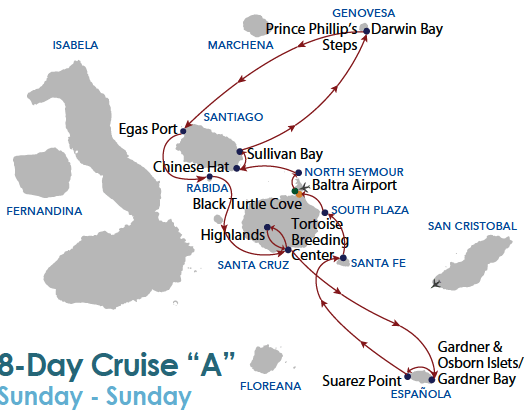
- The remote north and the beautiful south
- Albatrosses, red and blue-footed Boobies
- The soft sands of Española
- Visit the older Galapagos Islands
Day 1 (Sun): Fly to Baltra - transfer to yacht – North Seymour (L,D)
Upon arrival at Baltra Airport, all visitors will pay their entrance fee to the Galapagos National Park, undergo immigration control, retrieve checked luggage, and have their hand luggage inspected by the Galápagos Biosecurity Agency.
The Angel’s naturalist guide will meet you at the terminal exit and accompany you on a brief bus journey to the harbour to board the Angel. Lunch will be served.
North Seymour
North Seymour Island boasts abundant populations of Galapagos sea lions, blue-footed boobies, and magnificent frigatebirds. Its formation is attributed to a succession of submarine lava flows interspersed with sediment layers uplifted by tectonic forces. The island is distinguished by its arid vegetation zone.
Notable attractions include sightings of land and marine iguanas, frigatebirds, blue-footed boobies, and sea lions. Snorkelling offers encounters with rays, reef sharks, various fish species, and eels.
- Activities: Dinghy ride and hiking (1.5 miles / 2.5 km)
- Type of landing: Dry landing
- Difficulty: Moderate/difficult
Return to the Angel for dinner.
Day 2: Santiago: Chinese Hat – Sullivan Bay (B,L,D)
Chinese Islet
Situated close to the southeast coast of Santiago Island, this islet derives its name from the unique contour of its summit. Chinese Islet offers an exceptional vantage point for observing various geological formations, including lava tunnels and flows.
Remarkably, certain lava flows originated underwater before being uplifted above the ocean’s surface. Coral heads atop the lava flow are evidence of this phenomenon.
- Highlights and animals: Lava formations, great site for snorkelling with abundant marine species such as sea lions, sharks, rays and penguins.
- Activities: Hike (1,9 miles / 3 km)
- Difficulty: Easy
- Type of landing: Wet landing
Return to the Angel for lunch.
Sullivan Bay
Exploring Sullivan Bay, situated in the southeast region of Santiago, promises an intriguing encounter with its geological wonders.
The area is renowned for its extensive coverage of lava flows, offering a captivating insight into volcanic activity. Notably, the landscape features elevations resembling miniature volcanoes sculpted by the ancient lava streams, adding to the area’s geological allure.
- Highlights and animals: Lava flows, small volcanoes
- Activities: Hiking
- Difficulty: Easy/moderate
- Type of landing: Dry landing
Return to the Angel for dinner.
Day 3: Genovesa: Darwin Bay – El Barranco (B,L,D)
Darwin Bay
Embark on a journey to the pristine white-sand coral beach of Darwin Bay, where a picturesque half-mile trail (0.75 km) meanders through lush mangroves teeming with terrestrial birds. Keep your eyes peeled for the distinctive Nazca boobies, red-footed boobies, and swallow-tailed gulls, effortlessly spotted in this rich habitat.
Continuing along the path, you’ll encounter tranquil tidal pools where playful sea lions frolic in the crystal-clear waters. Finally, reach the trail’s end for a breathtaking vista of a majestic cliff, completing this unforgettable adventure.
- Highlights and animals: Nazca boobies, red-footed boobies, swallow-tail gulls, mangroves, coral pebble beach
- Activities: Hiking (0,9 miles / 1,5 Km), snorkelling, kayaking, and dinghy ride
- Difficulty: Easy
- Type of Landing: Wet landing
Return to the Angel for lunch.
El Barranco
Ascend the dramatic El Barranco, also known as Prince Phillip’s Steps, a challenging trail scaling a steep, rocky cliff face to reveal a wonderful panorama.
This rugged terrain is adorned with Palo Santo vegetation. It serves as the habitat for an array of fascinating species, including red-footed boobies, short-eared owls, Galapagos storm petrels, and Galapagos doves, adding to the allure of this awe-inspiring site.
- Highlights and animals: Red-footed boobies, short-eared owls, storm petrels, Galapagos doves
- Activities: Hiking (0,9 miles / 2 Km)
- Difficulty: Moderate
- Type of landing: Dry landing
Return to the Angel for dinner.
Day 4: Santiago: Egas Port – Rabida Island (B,L,D)
Egas Port
Discover Egas Port, alternatively known as James Bay, is nestled on Santiago Island, where the curious Galapagos hawks soar overhead, and nimble lava lizards dart across the landscape.
Follow the trail to the picturesque coastline, adorned with stunning tide pools and enchanting grottos brimming with diverse fauna. Bask in the sight of Galapagos fur seals luxuriating in the sun’s warm embrace. Additionally, indulge in thrilling snorkelling adventures, as Egas Port offers an exceptional underwater spectacle waiting to be explored.
- Highlights and animals: Fur seals, Galapagos sea lions, tidal pools and grottos, Galapagos hawks, oyster catchers, marine iguanas, finches; snorkelling: reef sharks, turtles, rays, underwater formations.
- Possible activities: Snorkelling, hiking (1.2 miles/2 km)
- Difficulty: Easy/moderate
- Type of landing: Wet landing
Return to the Angel for lunch.
Rabida
Prepare to explore Rabida Island, also known as Jervis. This vibrant gem in the Galapagos archipelago is renowned for its kaleidoscopic hues and diverse volcanic formations, which offer an exceptional snorkelling experience.
Our journey commences at Rabida’s iconic maroon/red sand beach, leading to an effortless hike culminating in a breathtaking lookout that unveils the island’s mesmerising landscapes in all their splendour.
A haven for bird enthusiasts, Rabida delights with abundant avian species, including finch varieties, Galapagos vermilion flycatchers, majestic Galapagos hawks, and graceful brown pelicans. Prepare to immerse yourself in the captivating allure of Rabida Island.
- Activities: Snorkelling, panga ride and short hike (0,6 miles / 1km)
- Difficulty: Easy/moderate
- Type of landing: Wet landing
- Highlights and Animals: Snorkelling: white-cheeked pintail ducks, colourful fish, sea lions, brackish water lagoon, pelicans
Return to the Angel for dinner.
Day 5: Santa Cruz: Tortoise Breeding Centre – Highlands (B,L,D)
Santa Cruz: Tortoise Breeding Centre
Embark on a visit to the “Fausto Llerena” Tortoise Breeding Centre in Puerto Ayora, where the magnificent giant tortoises are meticulously bred under human care.
Witness a remarkable spectrum of these gentle giants, ranging from tiny three-inch hatchlings to towering four-foot-long adults. Within this sanctuary, various subspecies of giant tortoises coexist, fostering a unique environment for interaction and observation.
Many of the elder tortoises have grown accustomed to human presence, often extending their heads for an unforgettable photo opportunity. The young hatchlings are nurtured until they reach approximately four years of age, ensuring they are robust and prepared to thrive in their natural habitat.
- Highlights and animals: Giant tortoises, finches, Galapagos rails
- Activities: Walking
- Difficulty: Easy
- Type of landing: Dry landing
Return to the Angel for lunch.
Highlands
We hop on a bus from Puerto Ayora to explore the captivating highlands of Santa Cruz, where lush greenery blankets the landscape, providing a striking contrast to the arid lower regions of the islands. The highlands are predominantly adorned with Scalesia trees, forming a verdant forest canopy that enchants visitors.
Delve into the subterranean world of the lava tunnels, stretching over half a mile in length, for an unforgettable and surreal journey. Conclude your exploration with a delightful lunch, surrounded by the natural wonders of this remarkable locale.
- Highlights and animals: Lava tunnels, Finches, wild tortoises, tortoise nesting site.
- Activities: Hiking (1.5 miles / 2 . km)
- Difficulty: Easy
- Type of landing: Dry landing
Return to the Angel for dinner.
Day 6: Española: Gardner Islet and Bay, Osborn Islet – Suarez Point (B,L,D)
Gardner Bay, Gardner Islet and Osborn Islet
Embark on an unforgettable journey to the wonderful Gardner Bay, where a stunning vista will greet you upon arrival. Stroll across the pristine white-sand beach, bustling with a vibrant sea lion colony, or plunge into the crystal-clear waters for a delightful swim alongside playful sea lion pups.
Keep an eye out for curious mockingbirds, adding to the charm of this picturesque beachscape.
- Highlights and animals: White sandy beach, sea lions, mockingbirds; snorkelling: colourful fish, sea lion nursery
- Possible Activities: Snorkelling, panga ride, short hike (0,6 miles / 1km) and kayaking
- Difficulty: Easy
- Type of Landing: Wet landing
Return to the Angel for lunch.
Suarez Point
Embark on the captivating trail to Suarez Point, where an array of fascinating avian species awaits your discovery, including the iconic blue-footed boobies, majestic albatrosses, and striking Nazca boobies.
This island is the primary breeding ground for nearly all of the world’s 12,000 pairs of waved albatrosses. It offers a rare opportunity to witness these magnificent birds in their natural habitat. Venture to a picturesque oceanfront site adorned with a majestic cliff, where the mighty albatrosses gracefully take flight.
Don’t miss the chance to witness the awe-inspiring blowhole, which sends sea water soaring into the air in a spectacular display. With its stunning landscapes, Suarez Point provides an ideal backdrop for photography enthusiasts to capture the beauty of the Galapagos Islands.
- Highlights and animals: Hood mockingbirds, Nazca boobies, waved albatrosses (from the last week of April until the last week of January, approx.), red-billed tropicbirds, lava lizards, Galapagos hawks, blowhole, fantastic landscape and maybe blue-footed boobies.
- Activities: Hike (1,9 miles / 3 km)
- Difficulty: Difficult
- Type of Landing: Dry landing
Return to the Angel for dinner.
Day 7: Santa Fe – South Plaza (B,L,D)
Santa Fe
Santa Fe Island, also known as Barrington, boasts a charming small bay and anchorage nestled along its northeast coast.
Here, visitors can explore two distinct trails offering unique experiences. One trail leads to a scenic viewpoint atop a cliff, offering incredible vistas of the island’s coastline and beyond. The second trail stretches from a quaint beach to a towering forest of tall prickly pear cacti, allowing one to immerse oneself in the island’s diverse flora and fauna.
- Highlights and animals: Land iguanas, giant Opuntia cacti
- Possible activities: Hiking (5 miles / 8 km)
- Difficulty: Moderate
- Type of landing: Dry landing
Return to the Angel for lunch.
South Plaza Island
This petite island, characterised by its sheer cliffs, was forged by the upsurge of lava and is now adorned with flourishing Opuntia cacti.
It serves as a sanctuary for one of the largest colonies of sea lions, who frolic along its shores. The striking yellow and red land iguanas that call this island home add to its vibrant ecosystem.
The distinctive Sesuvium plant dominates the landscape and undergoes a remarkable transformation throughout the seasons. During the rainy season, its hues shift to a verdant greenish-yellow, while in the dry season (from the end of June through January), it bursts into a brilliant shade of red, creating a beautiful sight against the backdrop of the island’s rugged terrain.
- Highlights and animals: Land iguanas, sea lion colony, Audubon’s shearwaters, swallow-tailed gulls, Nazca boobies, fantastic landscape with cliffs
- Activities: Hike (1.5 miles / 2.4 km)
- Difficulty: Moderate
- Type of landing: Dry landing
Return to the Angel for dinner.
Day 8 (Sun): Black Turtle Cove, transfer to Baltra airport, ends (B)
Black Turtle Cove
Our final journey is to Black Turtle Cove, nestled in the northern reaches of Santa Cruz.
This secluded inlet, embraced by verdant mangroves, can only be accessed by dinghy, adding to its allure. As you glide through its shallow waters, prepare to encounter a thriving haven of young marine life. Keep your eyes peeled for sightings of black-tip and white-tip reef sharks, graceful sea turtles, and an array of majestic rays, which frequently grace these tranquil waters with their presence.
Following this unforgettable excursion, you will be seamlessly transferred to Baltra airport, ensuring you arrive in ample time for your return flight to the mainland. Reflecting on the wonders of the Galapagos Islands, your journey draws to a close, leaving you with cherished memories of this extraordinary adventure.
- Highlights and animals: Baby hammerhead shark, rays, sea turtles, sea birds.
- Activities: Dinghy ride
- Difficulty: Easy
- Type of landing: No landing
Itineraries
While itineraries are generally Fixed, they remain subject to potential adjustments. Factors such as weather conditions, wildlife breeding patterns, safety considerations, directives from the Galapagos National Park, and guests’ specific interests and abilities, alongside operational requirements, may prompt your guide or captain to modify the timing or nature of visits.
Angel, Western, Central, and Southern Islands
Angel: Western, Central, and Southern Islands
Itinerary B: Western, Central, and Southern Islands
- 8 days: Sun-Sun (B)
- 7 days: Mon-Sun (D)
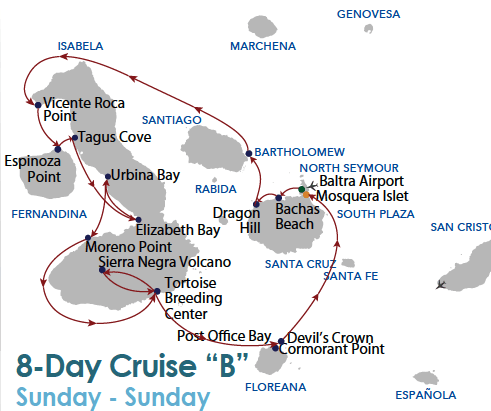
- The remote and wild Western islands
- Penguins, flamingos, and tortoises
- Snorkel the famous Devil’s Crown
- Hike the Sierra Negra volcano
Day 1 (Sun): Fly to Baltra - transfer to yacht – Bachas Beach (L,D)
Upon arrival at Baltra Airport, all visitors will pay their entrance fee to the Galapagos National Park, undergo immigration control, retrieve checked luggage, and have their hand luggage inspected by the Galápagos Biosecurity Agency (ABG).
The Angel’s naturalist guide will meet you at the terminal exit and accompany you on a brief bus journey to the harbour to board the Angel. Lunch will be served.
Bachas Beach
Nestled along Santa Cruz’s northern coastline, Bachas Beach beckons with its inviting waters, perfect for a refreshing swim.
Serving as a poignant reminder of the U.S. World War II presence in the Galapagos, visitors can catch a glimpse of a floating pier, one of the few remnants from that era. As you explore the shoreline, keep a lookout for the diverse array of wildlife that call this beach home.
The beach teems with life, from elegant flamingos and vibrant Sally Lightfoot crabs to elusive hermit crabs, graceful black-necked stilts, and majestic whimbrels. Be sure to watch for sea turtles, as they often come ashore to nest, adding to the natural splendour of this picturesque coastal haven.
- Highlights and animals: World War II remnants, Sally Lightfoot crabs, hermit crabs, black-necked stilts, whimbrels, and sea turtles.
- Activities: Hiking
- Difficulty: Easy
- Type of landing: Wet landing
Return to the Angel for dinner.
Day 2: Santa Cruz: Dragon Hill – Bartolomé (B,L,D)
Dragon Hill
Located on Santa Cruz Island, Dragon Hill stands as one of the Galapagos Islands’ newest accessible visitor sites, inviting tourists to explore its natural wonders.
Embark on one of the archipelago’s lengthier walking trails, which will guide you along a scenic beach and up to a captivating lagoon lookout. As you traverse this enchanting landscape, keep your eyes peeled for sightings of vibrant flamingos, graceful pintail ducks, and iconic land iguanas.
Dragon Hill promises an immersive experience amidst the unique biodiversity of the Galapagos, leaving visitors awestruck by its beauty and tranquillity.
- Highlights and animals: Land iguana nesting spot, Galapagos flamingos, common stilts, palo santo trees and cacti forest
- Activities: Panga ride and short hike
- Difficulty: Easy
- Type of landing: Dry landing
Return to the Angel for lunch.
Pinnacle Rock, Bartolomé
Our next destination is Bartholomew Island, renowned for its iconic Pinnacle Rock.
This island showcases the remnants of an extinct volcano, boasting a kaleidoscope of red, orange, black, and even green volcanic formations. Prepare to embark on a scenic trail of stairs leading to the summit of the volcano, a 30 to 40-minute hike offering unparalleled panoramic views of the surrounding islands.
Afterwards, we’ll visit a secluded and picturesque beach adorned with the sole vegetation found on this otherwise barren island. Dive into the crystal-clear waters for a thrilling snorkelling adventure, where you might encounter and swim alongside the enchanting Galapagos penguins, adding to the magic of this extraordinary excursion.
- Highlights and animals: Pinnacle Rock, panoramic view, moonlike landscape, penguins, pioneer plants, lava cactus; snorkelling: penguins, reef sharks, rays, and great colourful fish.
- Activities: Dinghy ride, snorkelling and hiking (1.2 miles/ 2 km)
- Difficulty: Moderate/difficult
- Type of landing: Dry and wet landings
Return to the Angel for dinner.
Day 3: Isabela: Vicente Roca Point – Fernandina: Espinosa Point (B,L,D)
Vicente Roca Point
Vicente Roca Point, featuring two distinct coves, is a sprawling bay renowned for its extraordinary marine biodiversity. As you explore its azure waters, look for captivating encounters with seahorses, graceful sea turtles, and the peculiar yet fascinating Mola mola, also known as the sunfish.
Snorkelling here offers a mesmerising opportunity to witness these remarkable sea creatures in their natural habitat, adding an unforgettable dimension to your Galapagos adventure.
- Highlights and animals: Penguins, blue-footed boobies, terns, Nazca boobies, two types of sea lions, sea turtles, rays and puffer fish.
- Activities: Snorkelling and dinghy ride
- Difficulty: Easy/moderate
- Type of landing: No landing
Return to the Angel for lunch.
Espinoza Point
Traversing the Bolivar Channel, which separates Isabela and Fernandina Islands, our journey leads you to Espinoza Point.
Upon arrival, venture past a bustling colony of marine iguanas and a playful group of sea lions. The highlight of your exploration awaits. The nesting site of the flightless cormorant, a unique spectacle found on the island. As you marvel at these remarkable birds, keep your eyes peeled for the majestic Galapagos hawk sightings, adding to this extraordinary experience’s richness.
- Highlights and animals: Flightless cormorants, marine iguanas, lava, sea lions, penguins, and the active volcano “La Cumbre.”
- Activities: Hike (approximately 1.2 miles / 2 km)
- Difficulty: Moderate
- Type of landing: Dry landing
Return to the Angel for dinner.
Day 4: Isabela: Tagus Cove – Elisabeth Bay (B,L,D)
Tagus Cove
Tagus Cove, situated on Isabela Island, is just across from Fernandina Island, near the Bolivar Channel that separates the two.
This historic site has been a favoured anchorage for ships since the 1800s, lending an air of maritime heritage to the area. Explore the network of trails winding alongside Lake Darwin, leading you up to a ridge where you’ll be treated to panoramic views of the surrounding landscape. Tagus Cove promises a journey through natural beauty and rich historical significance, offering a glimpse into the storied past of the Galapagos Islands.
- Highlights and animals: Penguins, flightless cormorants, Darwin Volcano and Lake
- Activities: Long hike, snorkelling, panga ride, kayaking (depending on weather conditions
- and time availability).
- Difficulty: Moderate/difficult
Type of landing: Dry landing
Return to the Angel for lunch.
Elisabeth Bay
Elizabeth Bay, nestled along the eastern coast of Isabela Island, is a haven for exploration.
Its picturesque bay is adorned with numerous islets, inviting visitors to explore by dinghy.
Keep your eyes peeled for charming penguins and charismatic blue-footed boobies perched on the rocky islets, adding to the scenic beauty of the area. Dive into the clear waters for an immersive snorkelling experience, where a plethora of marine life will greet you. Marvel at the kaleidoscope of colourful fish and playful sea lions, and, if you’re lucky, catch a glimpse of majestic sharks gliding gracefully beneath the surface.
- Highlights and animals: Mangrove forest (unique in Galapagos), sea turtles, penguins, rays, herons and sea lions.
- Activities: Hiking (1.5 miles / 2 km) and dinghy ride
- Difficulty: Easy/moderate
- Type of landing: Wet landing
Return to the Angel for dinner.
Day 5: Isabela: Urbina Bay – Moreno Point (B,L,D)
Urbina Bay
Urbina Bay sits at the foot of Alcedo Volcano along the western shoreline, nestled between Tagus Cove and Elizabeth Bay.
A significant geological event unfolded here in 1954, propelling the land upwards by over 16 feet. The coastline extended by half a mile, leaving marine creatures stranded on the newly formed shore.
Additionally, this spot offers excellent opportunities for snorkelling adventures.
- Highlights and animals: Land iguanas (the biggest in the Galapagos), hawks, coral reef, giant tortoises: snorkelling: turtles, rays, tropical fish
- Activities: Snorkelling, dinghy ride and hike, two trails: short (0.6mi/1 km), long (1.9mi/3km)
- Difficulty: Easy/moderate
- Type of landing: Wet landing
Return to the Angel for lunch.
Moreno Point
Moreno Point lies to the southwest of Elizabeth Bay. Here, you can step onto dry land that was once molten lava. The hardened lava surface now boasts intriguing craters that have transformed into crystalline tide pools.
Peering into these pools reveals a mesmerising underwater realm where marine creatures gracefully glide past your view. Expect to encounter pink flamingos, white-cheeked pintails, and common gallinules among the brackish pools.
With a keen eye, you might even spot white-tip reef sharks and sea turtles gracefully navigating the waters.
- Highlights and animals: Flamingos, gallinules, pintail ducks, turtles, white-tip reef sharks
- Activities: Snorkelling, panga ride and hike (1.2 miles / 2km)
- Difficulty: Moderate/difficult
- Type of landing: Dry landing
Return to the Angel for dinner.
Day 6: Isabela: Sierra Negra volcano – Tortoise Breeding Centre (B,L,D)
Sierra Negra Volcano
Today, at Sierra Negra Volcano, you’ll encounter the grandeur of the largest basaltic caldera in the Galapagos, spanning a remarkable diameter of 6.2 miles (10 km).
This site promises awe-inspiring vistas and the chance to witness up to seven species of finches alongside a lush array of vegetation. On the northern flank of the caldera, evidence of its recent volcanic activity in 2005 is starkly visible, providing a glimpse into the dynamic forces shaping this magnificent landscape.
- Highlights and animals: Basaltic caldera, stunning views, finches
- Activities: Hiking, walking
- Difficulty: Moderate trek, 3-4 hours
- Type of landing: Dry landing
Return to the Angel for lunch.
Arnaldo Tupiza Breeding Centre
The Arnaldo Tupiza Breeding Centre sits approximately one mile (1.5 km) away from Puerto Villamil.
Within its confines, populations of tortoises from various regions, including South Isabela, Sierra Negra Volcano, Cerro Azul, Cazuela, Cinco Cerros, Roca Union, San Pedro, Tables, and Cerro Paloma, have been carefully bred in captivity.
The centre boasts 330 juvenile and adult tortoises, contributing significantly to conservation efforts for these iconic species.
- Highlights and animals: Two of the five species of the giant tortoise
- Activities: Walking
- Difficulty: Easy
- Type of landing: Dry landing
Return to the Angel for dinner.
Day 7: Floreana: Devil’s Crown, Cormorant Point – Post Office Bay (B,L,D)
Devil’s Crown and Cormorant Point
Prepare for an unforgettable snorkelling adventure around Devil’s Crown, the rugged remnants of an offshore volcano protruding from the ocean’s surface. This iconic Galapagos snorkelling site offers unparalleled opportunities to encounter diverse marine life amidst its rocky formations.
Following this aquatic exploration, our journey continues to Cormorant Point. A sprawling flamingo lagoon takes centre stage, attracting avian species such as common stilts and white-cheeked pintails.
The island’s beaches boast unique characteristics. The Green Beach derives its name from the vibrant hue of its sand, attributed to a high concentration of olivine crystals, while the Flour Sand Beach is comprised of pristine white coral sands.
- Activities: Snorkelling, dinghy ride and hike (1.25 mi /2 km)
- Difficulty: Moderate/difficult snorkel, easy hike
- Type of landing: Wet landing
- Highlights and animals: Large array of marine species, flamingos, green-coloured beach
Return to the Angel for lunch.
Post Office Bay
Upon landing on a picturesque beach, you’ll head to a historic site where 18th-century whalers established a unique tradition: a wooden barrel repurposed as an unofficial mailbox.
This fascinating custom persists today, and it is embraced by Galapagos visitors who deposit postcards for future travellers to collect and mail. So, be sure to bring along your postcards, and prepare to be amazed as your message reaches its destination, perhaps even before you return home.
- Highlights and animals: Post office barrel, lovely sandy beach
- Activities: Short hike (less than 0.6 miles / 1km) and snorkelling
- Difficulty: Easy
- Type of landing: Wet landing
Return to the Angel for dinner.
Day 8 (Sun): Mosquera Islet, transfer to Baltra airport, ends (B)
Mosquera Islet
Nestled between Baltra and North Seymour islands, Mosquera Islet emerges as a vibrant oasis in the Galapagos archipelago.
This formation, resulting from geological uplift, comprises a reef of rocks and coral spanning a mere 160 metres at its narrowest point. Despite its compact size, Mosquera Islet boasts one of the region’s largest congregations of sea lions, alongside an abundance of diverse shorebirds.
Occasionally, visitors may witness the awe-inspiring sight of orcas preying on the resident sea lion population. As your exploration of this remarkable destination concludes, you’ll be seamlessly transferred to Baltra Airport, ensuring a timely departure for your return flight to the mainland.
- Highlights and animals: Orcas, sea lions, shore birds
- Activities: Dinghy ride, snorkelling
- Difficulty: Easy
- Type of landing: No landing
Itineraries
While itineraries are generally Fixed, they remain subject to potential adjustments. Factors such as weather conditions, wildlife breeding patterns, safety considerations, directives from the Galapagos National Park, and guests’ specific interests and abilities, alongside operational requirements, may prompt your guide or captain to modify the timing or nature of visits.
Prices From $6,645 / £5,402 per person
What's Included?
Accommodation in a double or twin cabin, English-speaking naturalist guide, all meals from lunch on the first day to breakfast on the departure day, free purified water, tea, and coffee, visit as per itinerary, shared Galapagos transfers airport-boat-airport, snorkelling gear (mask, tube, and fins), wetsuits, kayaks, and underwater camera use
What's Not Included?
International flights, round-trip flights to the Galapagos Islands, Galapagos National Park fee, Galapagos Ingala fee, bus fares in Galapagos ($10 approx.), soft and alcoholic drinks (payable by card or cash), personal items, souvenirs, tips (payable in cash only), travel insurance, personal items, Ecuador services.
Accommodation
The Angel can accommodate up to 16 guests in six main-deck double cabins (14 m2 / 152 ft2) and two upper-deck suites (18 m2 / 196 ft2).
Each has its own plush bathroom with hot water and air conditioning for humid nights. It also has bathrobes, a hair dryer, a safety box, and a TV.
Social areas
Aboard, you’ll find a dining room, lounge, an al fresco dining area, and sundeck with Jacuzzi.
Salon: Television, DVD, and a small library.
Dining room: Internal and external dining areas.
Bar: Enjoy cocktails and national and international drinks (not included in the cruise price).
Sundeck: Perfect place to relax and enjoy the vistas.


Tour Staff
The Angel crew are “Galapagueños” guides, captains and crew members born and raised in the Galapagos Islands.
The Naturalist, English-speaking guides studied and were trained at Charles Darwin Scientific Station and have years of experience guiding in the Galapagos Islands.
Your onboard naturalist guide is undoubtedly the crucial pivot for your experience in the Galapagos. Angel guides use their extensive experience to lead excursions, search for and identify species and point out interesting details. They also ensure your safety and compliance with indispensable conservation rules.
Above all, our guides share their knowledge, love and respect for the Galapagos’ stunning ecosystem. Their explanations (in English and Spanish) and fascinating stories about animal behaviour, intriguing ecosystems and survival strategies can bring nature even more to life in the field and during lectures or daily briefings aboard.
Ten crew aboard the Angel will be looking after your needs in Galapagos.
Meals
Angel’s chef prepares delightful traditional local and international dishes. All Angel cruises include vegan and vegetarian options.
The varied menu includes local and international dishes. The restaurant is buffet-style. The food is healthy and delicious, and snacks and juices are served between meals.
Free drinking water is available in the lounge 24 hours a day.
Note: Times of the meals are flexible and may vary to meet nature at its best.
Activity Level
Walks
Every visit to each island involves an easy or moderate walk, which can last between 2 to 3 hours and is not considered strenuous. The longest walk is around 1.3 miles/2km. On these walks, you will be led by an expert naturalist guide in a small group along clearly marked trails. They will explain in great detail all the wonders of our carefully selected itineraries. Most days, there are two guided walks on a specific island where you can walk and hike on beaches and lava fields alongside cliffs and around mangrove estuaries.
Snorkelling
Snorkelling in the Islands is the highlight of the Galapagos cruise for many of our guests. Samba provides fins, masks, and snorkel, plus long wetsuits for free.
You can go snorkelling almost every day. Some of the highlights include snorkelling with marine iguanas and playful sea lions, green sea turtles, penguins and an incredible variety of colourful reef fish. The water is a little colder on the western islands but teaming with life. There are beach snorkels for beginners and deeper waters.
Kayaks
Free two-person sea kayaks are available. The crew shadows you in a dinghy for your safety. The guide makes the final decision on whether and where kayaks can be put into the water.
Zodiac rides
Dinghies, or “Pangas,” as they are known in the Galapagos, are inflatable zodiacs that serve as the primary transportation method from our Galapagos yachts to the visitor sites. Several times during your week-long travel adventure, you can enjoy dinghy (or panga) rides through shores, mangrove estuaries, coves and caves.
Practical Information
Is this the cruise for me?
The Angel is a brand-new (2024) first-class motor yacht. Its ample cabins make it perfect for couples, friends, and families, and the onboard WiFi is a real boost for children.
The Angel suits anyone looking to travel the Galapagos Islands in style, with all the details taken care of for you.
Introduction to Galapagos
These magical islands comprise of 50 volcanic islands of varying shapes and sizes, which lie 1,000 kilometres off the coast of Ecuador.
Here, unlike anywhere else on Earth, you can enjoy a thousand close encounters with a weird and wonderful variety of ‘friendly locals’, including giant tortoises, fur seals, sea iguanas, frigate birds and blue-footed boobies.
Read our Galapagos Islands Guide and more about diving.
In 1535, Tomás de Berlanga, Bishop of Panama, floated into this archipelago and named it Galapagos after the giant tortoises he encountered. Pirates used the islands for refuge and to bury their stolen treasure after that.
The islands’ most celebrated visitor was Charles Darwin, who arrived aboard the HMS Beagle in 1835. The rare life forms he encountered helped him formulate his theory of evolution, which he published in The Origin of Species by Means of Natural Selection.
It wasn’t until 1959 when it became part of Ecuador’s national park system that this fragile ecosystem with its rare and endemic species came under protection.
In 1979 the Galapagos archipelago was declared a UNESCO World Heritage Site.
Weather in Galapagos
When to visit Galapagos Islands: weather and wildlife
There is no real ‘best’ time to visit Galapagos on holiday as there is always wonderful wildlife and weather to enjoy. Read our blog for more.
Most animals – tortoises, sharks, sea lions and boobies – are found year round and many of the species here are non-migratory.
The Galapagos Islands are located right on the equator so air and water temperatures do not vary by much.
Having said that, there are two recognised seasons, and each months brings natural marvels for the visitor to enjoy.
Below is our quick guide to the weather and wildlife you can find on the Galapagos Islands.
General weather information
The warm season (Jan-Jun)
- Calm, clear warm waters, great for snorkelling, often without a wetsuit.
- Great weather, with February and March being the hottest and sunniest months with blue skies and sunshine.
- Occasional heavy bursts of rain in the afternoons.
Sea temperatures: 22-25°C / 72-77°F
Land temperatures: 21-32°C / 72-90°F
The dry ‘garua’ season (Jun-Dec)
- It’s a great time for marine life in the cooler seas. Snorkellers may want a wetsuit.
- August and September the coolest when you may need a jacket in the evenings and the sea can be choppy.
- There can be mist on the islands in the mornings (garua) which usually burns off by midday leaving overcast skies or a sunny afternoon.
Sea temperatures: 15-22°C / 60-72°F
Land temperatures: 18-24°C / 65-75°F

Air and sea temperatures in Galapagos, month-by-month
Galapagos cruise kit list
Good kit is vital for every trip.
Book with Andean Trails and get 15% off Páramo’s fantastic ethical and high performance outdoor gear.
Galapagos – general advice
Galapagos is warm and humid, and you will need t-shirts (moisture wick-away or breathable t-shirts can be very useful, it can get very hot in the day), shorts, lightweight skirt or trousers and bathing suits.
One or two cotton shirts can be used to protect you from sunburn, especially when snorkelling (not very elegant worn in the water over a swimsuit, but practical – and Galapagos is NOT an elegant place!).
You may want to change into different clothes for the evening, but don’t take anything dressy or smart – there really is a very relaxed atmosphere on board.
Pack something warm for going on deck in the early morning or evening a fleece, maybe, and a sweatshirt – and a waterproof for the Highlands.
Strong sandals, trainers, or light hiking boots are ideal footwear – you may like to have something suitable for easy walks and another for tougher terrain – your guide will advise you daily what the walking will be like. Most boats ask passengers not to wear heavy shoes on board.
Do take a hat!
Seasickness tablets if you think you will have problems – i.e. Sturgeon, or Mareol if you buy them in Quito. The sea can be choppy, so it is recommended to take them as a precaution.
Galapagos – detailed kit list
- First aid kit – aspirin, imodium, sun tan lotion (facter 50 recommended), sunburn cream, lip salve, throat lozenges, insect repellent, etc.
- Earplugs – the engine can be noisy, whatever the boat, wherever your cabin.
- Sun glasses and sun hat.
- Snorkelling equipment – the boat either provides kit for free or has a supply for hire, but it may suit you better to take equipment in your size that you know will fit you. Even if you have not snorkelled before, DO have a go – under water Galapagos is a very special experience. Try it first of all from the beach, to get the hang of breathing through gritted teeth, then take the plunge!
- Towel, for the beach (most boats provide these, please ask).
- Money belt.
- Passport, with at least 6 months remaining from date of return from Ecuador.
- US Dollars cash and mixed denomination notes, undamaged and unmarked.
- Visa/MasterCard, Cash card.
- Personal & Medical insurance.
- Camera and film / memory cards (take at least twice the amount you think you will need!). You may want to take an underwater camera for snorkelling.
- Camera charger
- Binoculars
- Small backpack – to keep your sun cream, water, shirt etc in when you are on shore.
- Small plastic water bottle, 1-2 litres, depending on how much you drink.
- Biodegradable sunblock (v. high factor, 50+ recommended) and lip salve.
- Toiletries (featuring biodegradable soap).
- Wet Wipes/antiseptic hand wash cream
- Travel alarm clock.
- Sewing kit.
- Spanish/English phrasebook.
- Book, e-book, mp3 player/ipod or other for free time.
The Galapagos Islands are a very fragile environment and the arrival of more and more inhabitants to the islands, as well as tourist have an impact.
Please try to minimise your impact by:
- Bringing a water bottle to refill, rather than using a new bottle each time.
- Recycling your rubbish where possible, not leaving any rubbish behind.
- Taking batteries back home with you – they cannot be recycled properly in Ecuador.
- Saving water where possible.
- Leave toiletries that contain microbeads at home
- Saving energy by switching your lights off when you leave the room. Electricity on the islands comes from a generator, fuelled by petrol. For this same reason, please think about whether you really need to use your air conditioning.
Quito
Pleasantly warm during the day, but can be quite chilly during the morning or at night when you might want a jacket or a fleece, plus a waterproof.
You may want to dress up a little more in the evening here, depending on where you are staying, and what sort of restaurant you like.
Guayaquil
Conditions here are similar to Galapagos – hot and humid. T-shirts and shorts in the day, and like Quito, something smarter for eating out in restaurants at night.
ATOL holiday protection
Andean Trails has 25 years of experience of putting together the best South America holidays.
We pay a fee to the CAA for every licensable passenger we book since we hold an Air Travel Organiser’s Licence granted by the Civil Aviation Authority. In the unlikely event of our insolvency, the CAA will ensure that you are not stranded abroad and will arrange to refund any money you have paid to us for an advance booking.
We also offer ATOL (Civil Aviation Authority) protected holidays to give our customers peace of mind when booking and travelling.
When you buy an ATOL protected air holiday package from Andean Trails Ltd you will receive a Confirmation Invoice from us confirming your arrangements and your protection under our Air Travel Organiser’s Licence number 6275.
You can read more about ATOL, who is covered and what protections you have if not ATOL-covered, on our ATOL page.
What is ATOL?
The CAA’s ATOL scheme offers protection to your money and your holiday if you book with us. Not everybody is covered (see ‘Who is covered?’ for more), as you must purchase an ‘air package holiday’ with Andean Trails to be protected.
And ‘air package holiday’ is defined as including a flight and some ground services (hotel, transfer, trek etc). This is also known as an ‘ATOL-protected holiday’.
Who is covered?
To be covered by ATOL, you must book a flight and some ground services with us and be from the UK. If you are from the UK and only book ground services and no flights, you are not covered by ATOL (see below for more on how non-ATOL clients are covered).
If you are outside the UK and buy flights with us, you will be ATOL protected IF any of the flights booked with Andean Trails touches/stops in the UK at any point during your holiday package booked with us.
If you buy your flights elsewhere, please check with that agent if you are ATOL protected. Be careful with online flight purchases and make sure you know what protection you have, if any, before paying for flights.
Not all holiday or travel services offered and sold by us will be protected by the ATOL scheme. Please ask us to confirm what protection may apply to your booking.
For land only holidays not involving any air travel, in accordance with “The Package Travel, Package Holidays and Package Tours Regulations 1992”, all UK passengers booking with Andean Trails Ltd. are fully protected for the initial deposit and subsequently the balance of all money paid to us, arising from cancellation or curtailment of travel arrangements due to the insolvency of Andean Trails.
I’m not ATOL covered, what protection do I have?
If you are not ATOL covered, any payments you make to us go to a Trust account.
We can only access this money once your tour has been completed, meaning that if anything happens to Andean Trails Limited while you are on holiday, then your money is secure and you can either complete the trip or be able to make it home.
If you pay for your holiday with a credit card, some offer payment protection – please check with your cardholder.
You also should have cancellation protection written into your insurance (which we recommend you have at the time of booking) in case you need to cancel.
Prices From $6,645 / £5,402 per person
2025
8 days: $ $6,645 (standard) / $7,145pp (suite)
7 days: $5,645 / $6,145pp
5 days: $ 4,245 / $4,445pp
4 days: $2,745, $ 2,945pp
Single supplement: +80%
Christmas and New Year surcharge applies.
Children under 12 years: -10% discount
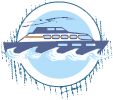
Dates & Prices
Prices From $6,645 / £5,402 per person
2025
8 days: $ $6,645 (standard) / $7,145pp (suite)
7 days: $5,645 / $6,145pp
5 days: $ 4,245 / $4,445pp
4 days: $2,745, $ 2,945pp
Single supplement: +80%
Christmas and New Year surcharge applies.
Children under 12 years: -10% discount
Can’t find what you’re looking for? Get in Touch
+44 (0)131 378 5593
+44 (0)131 554 6025



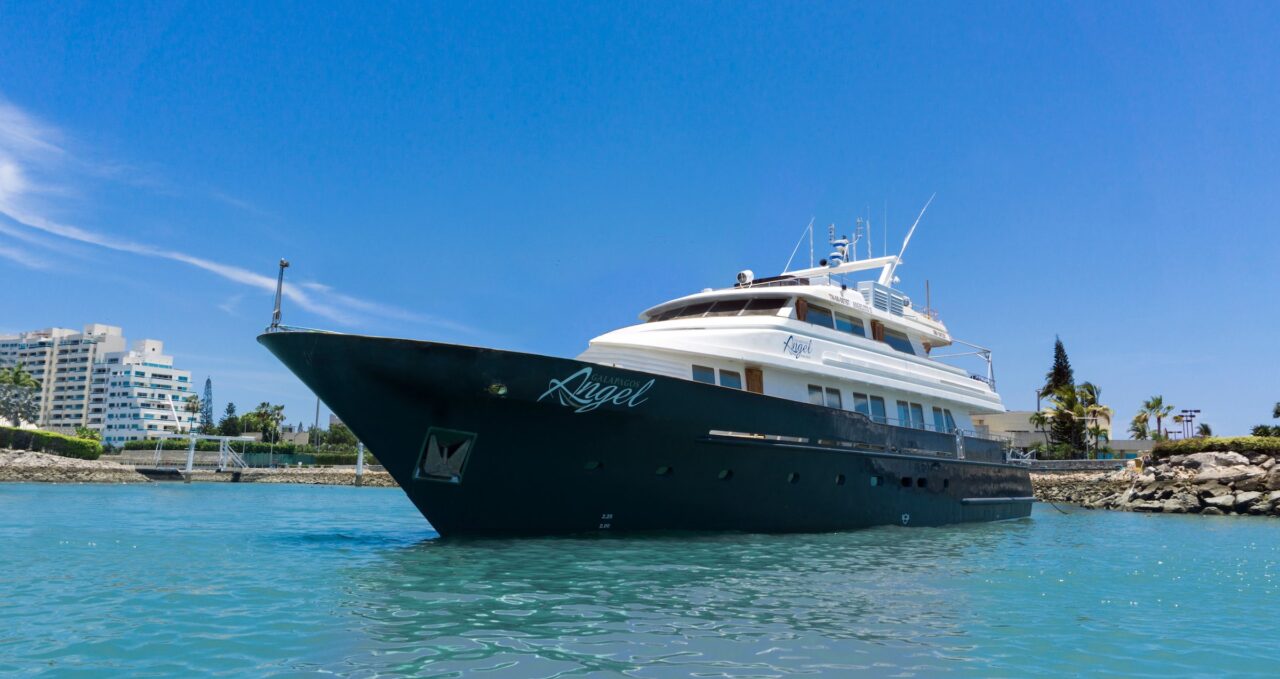
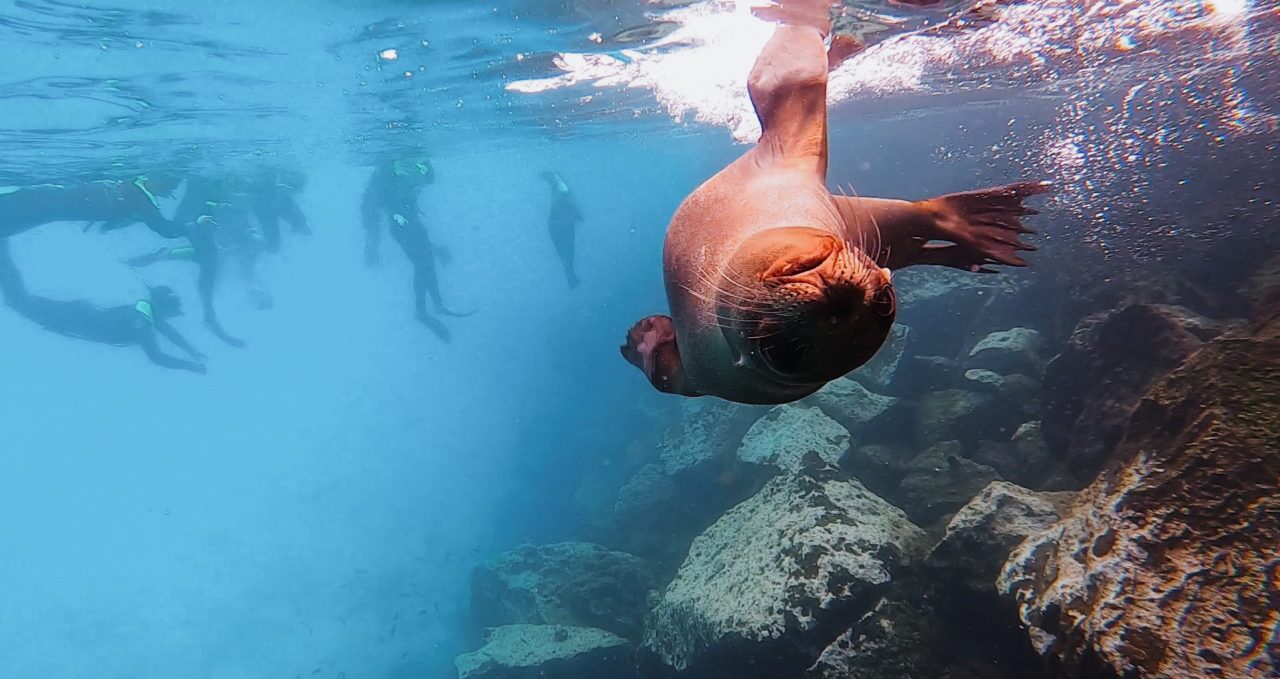
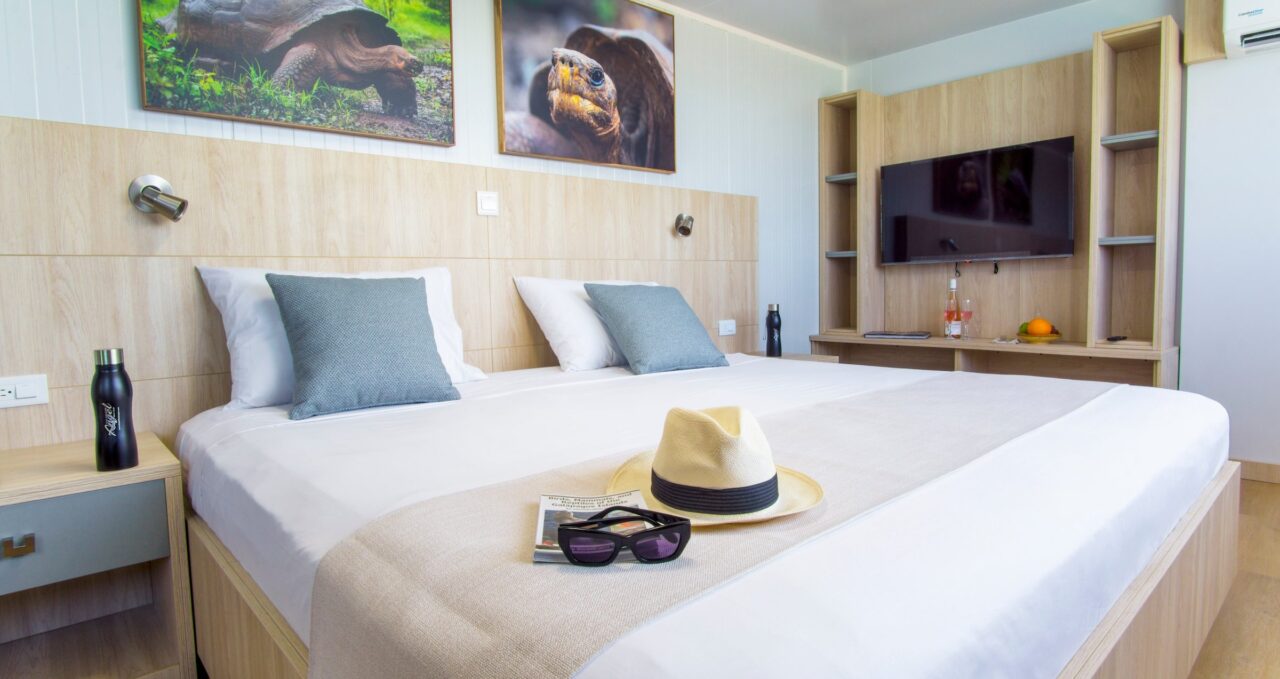
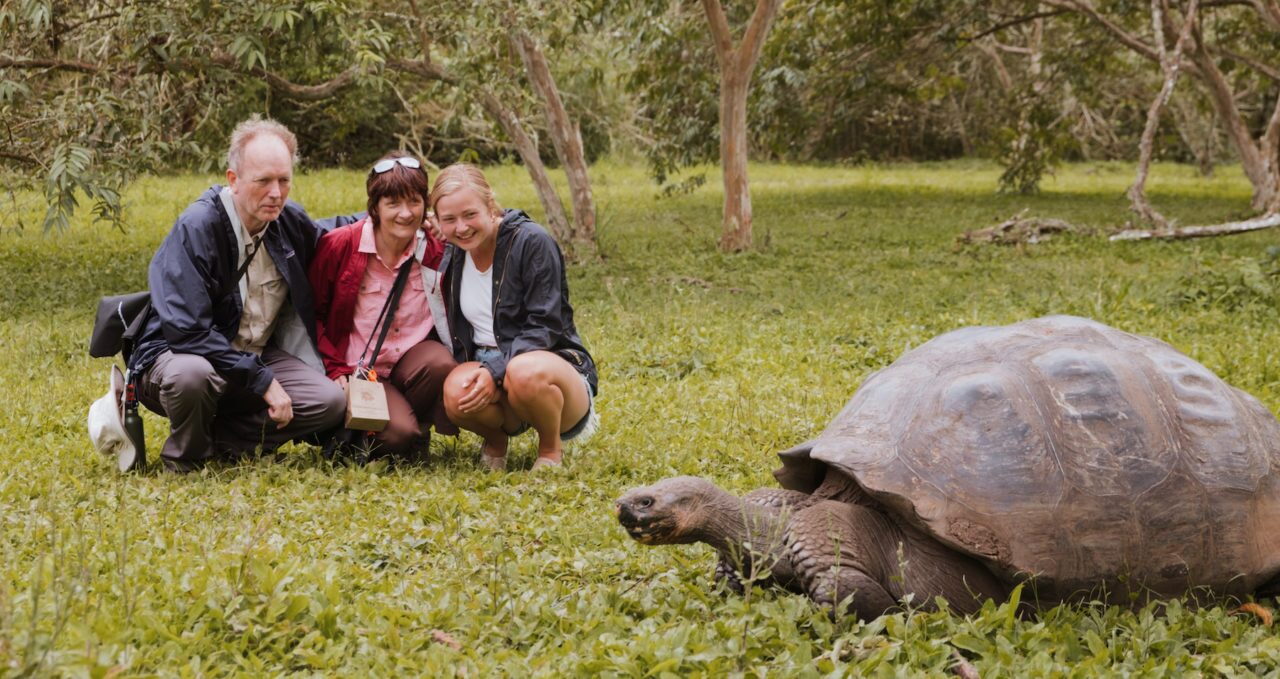
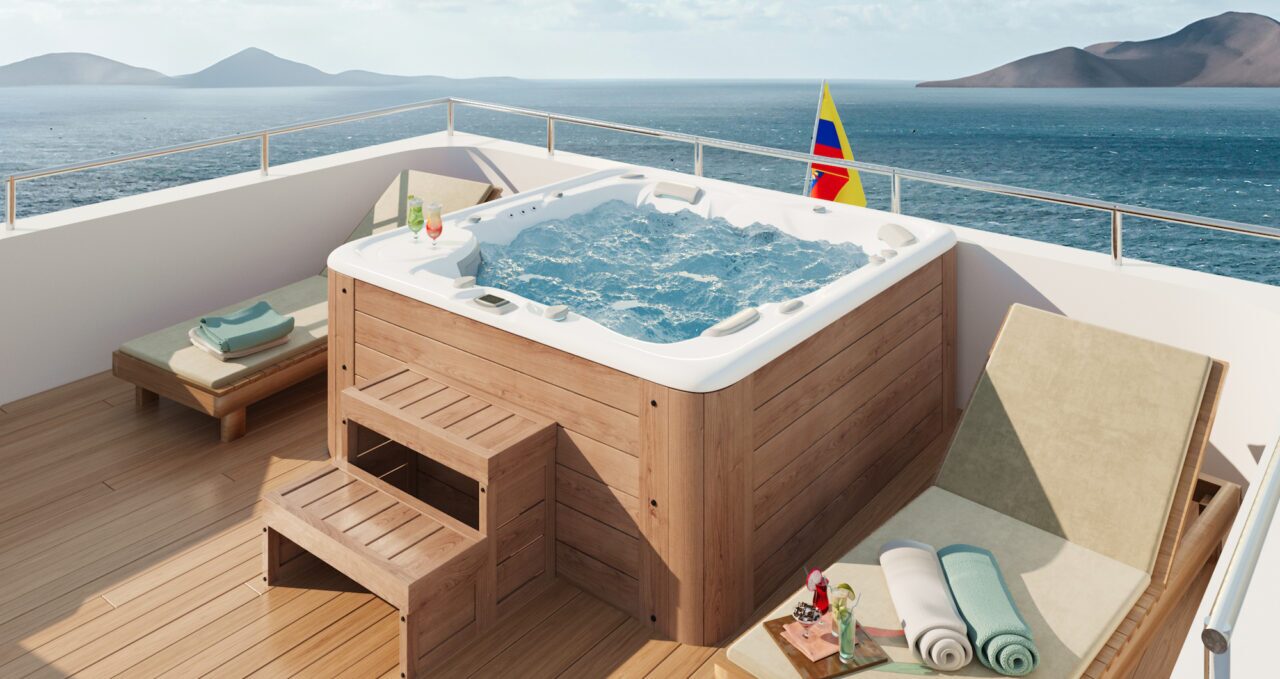
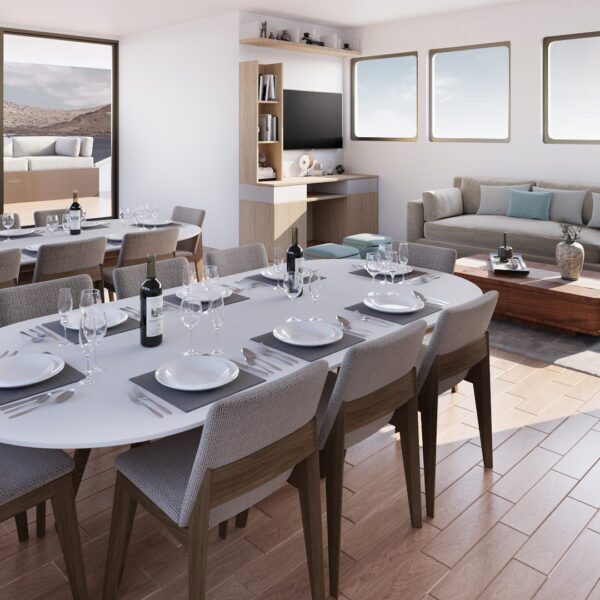
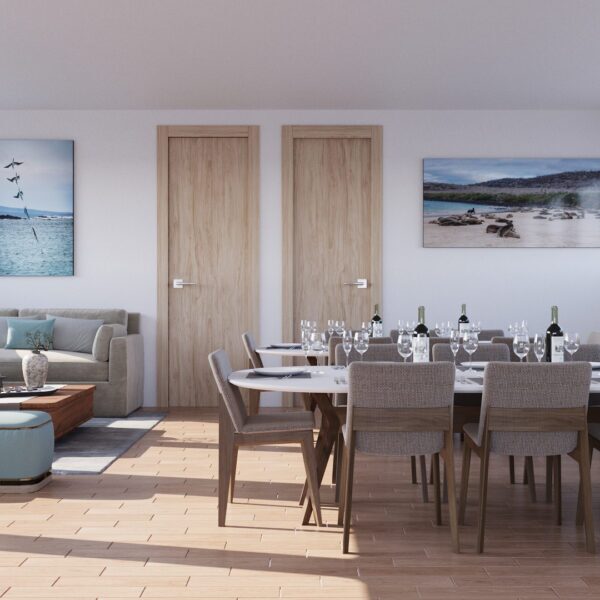
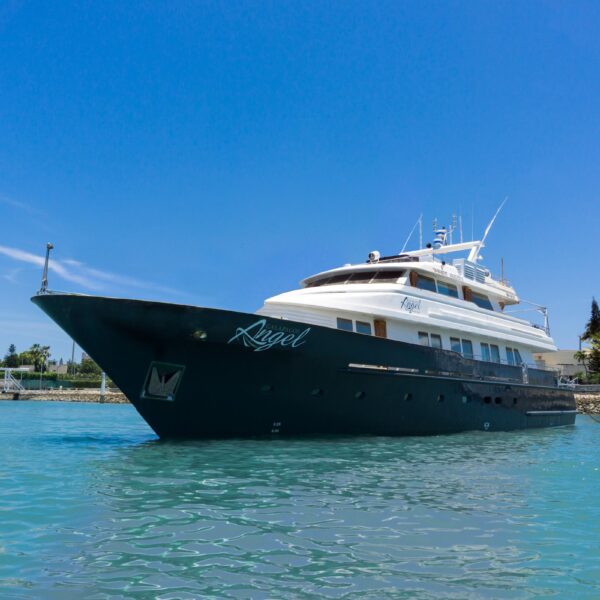
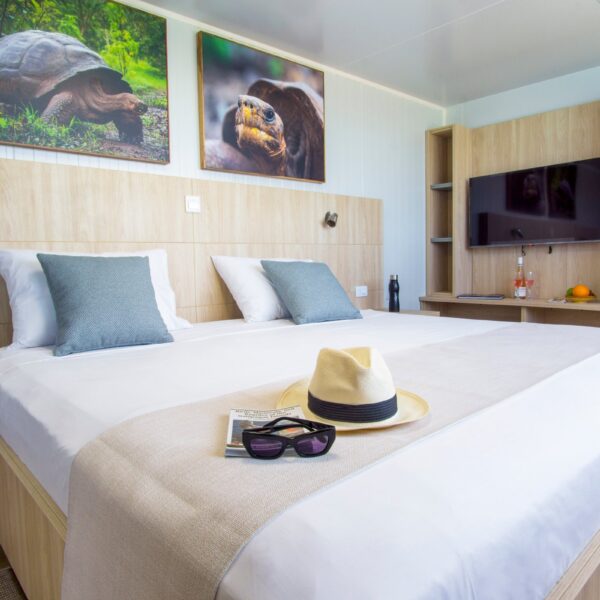
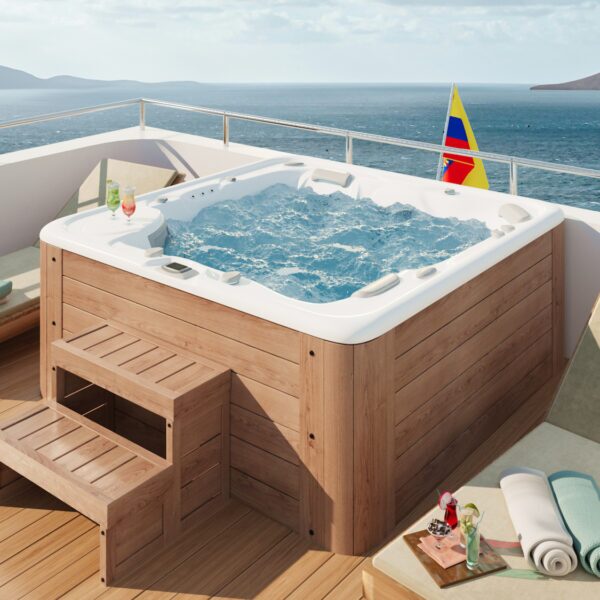

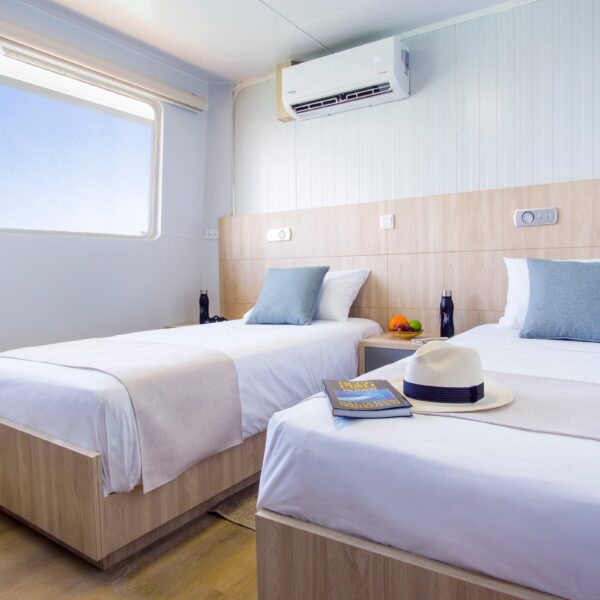
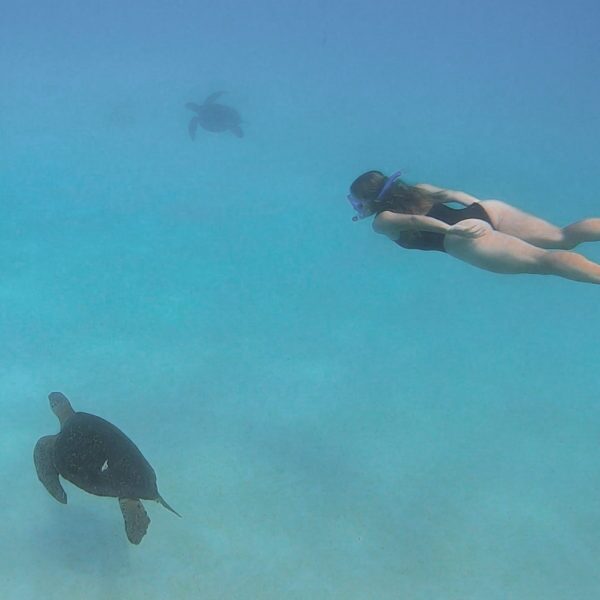
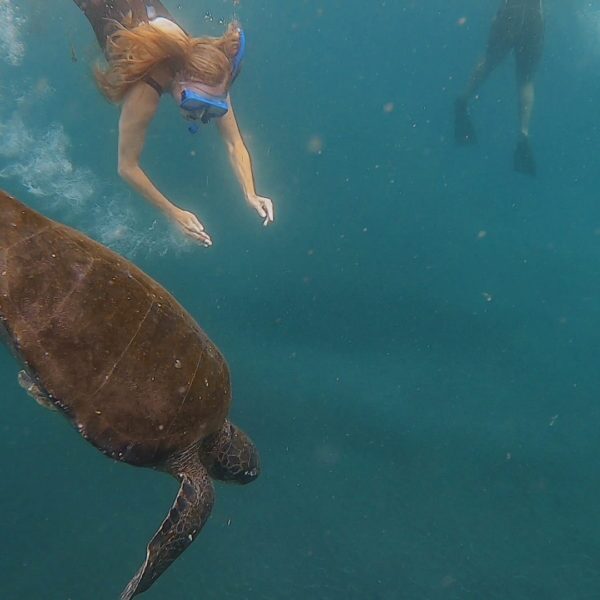
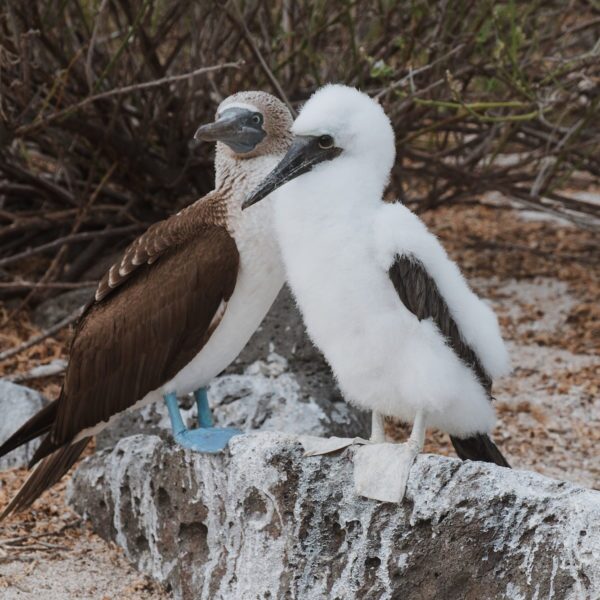
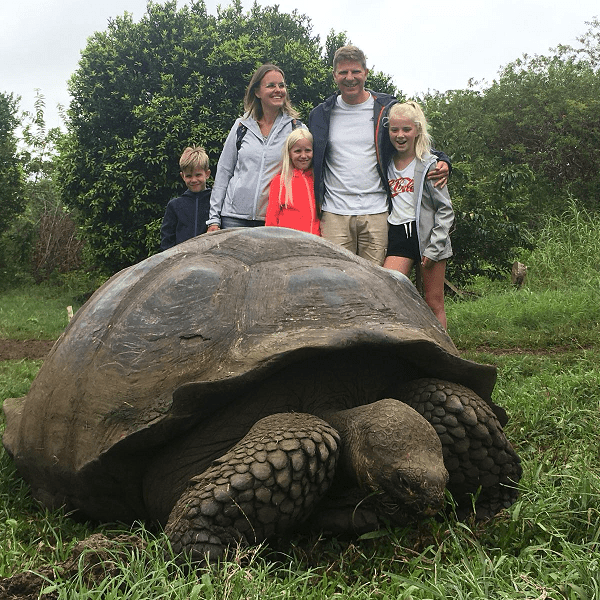
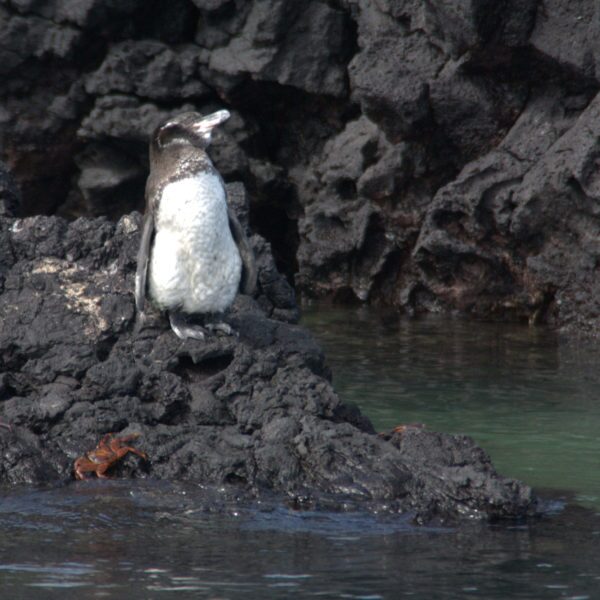
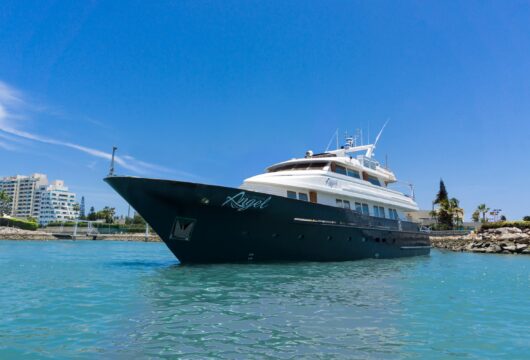
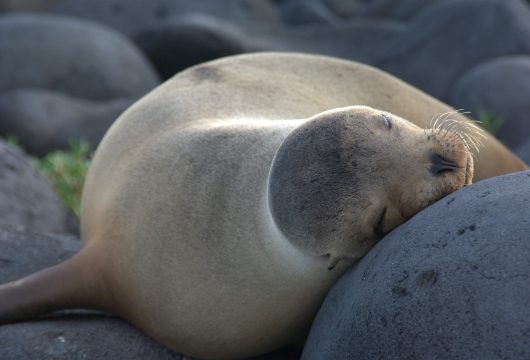
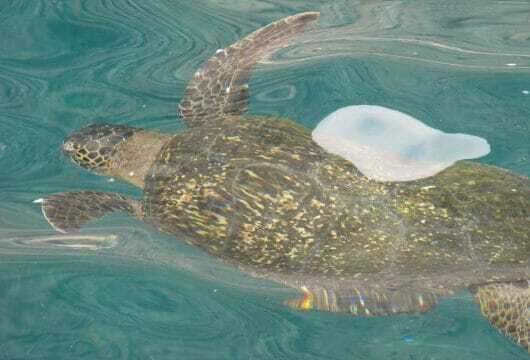
 a Group Tour
a Group Tour 